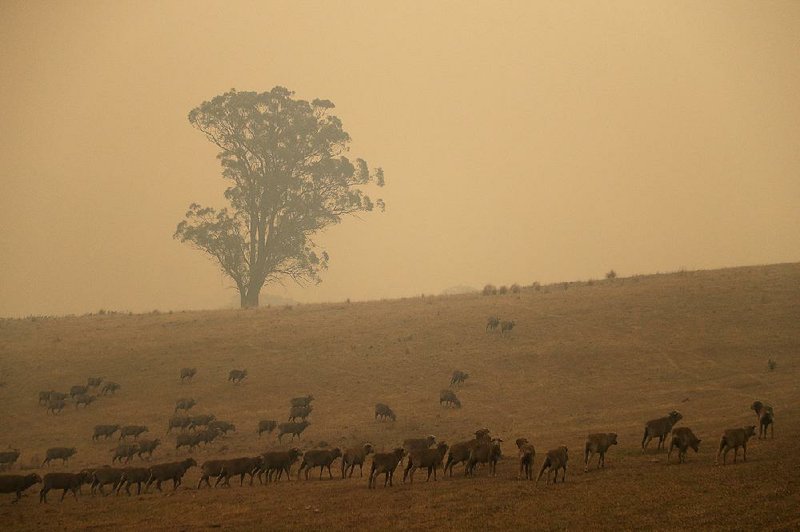BURRAGATE, Australia -- A firefighter was killed by a falling tree while battling a blaze overnight and the prime minister today said his government was adapting and building resilience to the fire danger posed by climate change.
Bill Slade -- one of the few professionals among mainly volunteer brigades battling blazes across southeast Australia -- died Saturday near Omeo in eastern Victoria state, Forest Fire Management Victoria Executive Director Chris Hardman said.
In November, the 60-year-old married father of two was commended for 40 years of service with the forestry agency.
The death brings the toll to at least 27 people in a crisis that has destroyed more than 2,000 homes and scorched an area larger than Indiana since September. Four of the casualties were firefighters.
On Saturday, officials said two wildfires merged to form a raging inferno in southeastern Australia, while a man suffered serious burns protecting a home in a night of treacherous conditions during the nation's unprecedented crisis.
Authorities were assessing the damage after firefighters battled flames fanned by strong winds through the night and lightning strikes sparked new blazes in New South Wales and Victoria, Australia's most populous states. Conditions were milder Saturday and forecast to remain relatively benign for this week.
"In the scheme of things, we did OK last night," said Andrew Crisp, Victoria's emergency management commissioner.
Shane Fitzsimmons, commissioner for the New South Wales Rural Fire Service, said officials were "extremely relieved" the fires were not more destructive overnight.
A man suffered burns protecting a home near Tumbarumba in southern New South Wales and was airlifted to a Sydney hospital in serious condition to undergo surgery, Fitzsimmons said.
Several firefighters suffered minor burns and one suffered shortness of breath, but they were not admitted to a hospital, he said.
With no heavy rain expected, the 1.58 million-acre blaze that formed when two fires joined in the Snowy Mountains region near Tumbarumba, close to the Victorian border, is expected to burn for weeks, officials said.
The fire crisis in Australia has killed at least 26 people, destroyed more than 2,000 homes and scorched an area larger than the state of Indiana since September.
It also has brought accusations that Prime Minister Scott Morrison's conservative government needs to take more action to counter climate change, which experts say has worsened the blazes. Thousands of protesters rallied late Friday in Sydney and Melbourne, calling for Morrison to be fired and for Australia to take tougher action on global warming.
Morrison said his government was developing a national disaster risk reduction framework within the Department of Home Affairs that will deal with wildfires, cyclones, floods and drought. The government was working through details of the framework with local governments.
"This is a longer-term risk framework model which deals with one of the big issues in response to climate changing, and that is the resilience and the adaptation that we need in our community right across the country to deal with longer, hotter, drier seasons that increase the risk of bushfire," Morrison said.
Morrison said his government accepted that climate change was leading to longer, hotter and drier summers, despite junior government lawmaker George Christensen posting on social media over the weekend that the cause of the latest fires was arson rather than man-made climate change. Another junior lawmaker, Craig Kelly, has also publicly denied any link between climate change and fire crisis.
Australia is the world's biggest exporter of coal and liquid natural gas. Australians are also among the worst greenhouse gas emitters per capita.
On Friday, thousands of people in the path of fires fled to evacuation centers, while some chose to ignore evacuation orders and stayed to defend their homes.
Information for this article was contributed by Rod McGuirk of The Associated Press.
A Section on 01/12/2020
